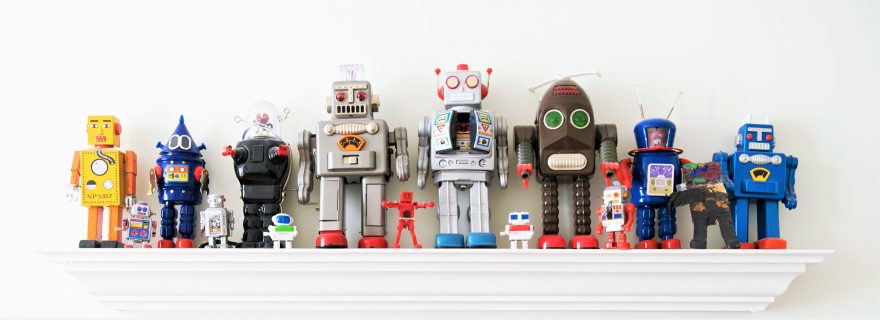Flexibility and persistence: a trade-off fit for robots
How can we be both flexible and persistent? And how can robots help us understand this?
Don’t you hate it when you get to the supermarket and your favorite item is gone? This situation forces you to choose between different types of action. You could be persistent and visit other supermarkets to find that one product – spending your time and energy – or you could be flexible and pick another option from the wide range of tomato sauces. Whatever you do, your brain decides whether you are being persistent or flexible. But how does it make this decision?
The actions you choose to perform are coded by widespread activity in your brain (1). This means that the flexible or persistent control of actions should also affect the whole brain. The control might be regulated by neurotransmitters, the chemicals that take care of communication between neurons throughout the brain. Dopamine is one of these neurotransmitters and it has been related to the tradeoff between persistence and flexibility (2).
So, different levels of dopamine in different parts of the brain may control the way you choose your actions. It may push the control of your actions toward pursuing a goal, which would make you persistent, or toward flexibility (3, 4). However, too much of either type can get you into trouble, which can be seen in Parkinson’s disease. In this disease dopamine levels diminish, which leads to impaired cognitive flexibility. Increasing dopamine levels in these patients until movement symptoms like tremors disappear sometimes causes them to show very impulsive behavior leading to pathological gambling or drug addiction. Dopamine treatment may have pushed the balance of control to be so flexible that patients went from being overly persistent to being too flexible (4).
Regularly, computational models are used to see whether our ideas about action control are right. To study the persistence/flexibility trade-off we could model neurons in a robot’s ‘brain’ and see if it behaves as we think it should. To include the influence of dopamine we could model a dopamine unit that affects all the neurons in the robot brain. We could then let the robot search for rewards and study the effects of the dopamine unit on the balance between persistent searching (in known reward locations) or flexible searching (by exploring new locations). So with the help of robots, we could study how the brain decides to be persistent or flexible. More convenient, we could eventually also program robots to be flexible when they shop for our tomato sauce.
1. Hommel, B. (2009). Action control according to TEC (theory of event coding). Psychological research, 73, 512-526. doi:10.1007/s00426-009-0234-2
2. Cools, R. (2008). Role of dopamine in motivational and cognitive control of behavior. Neuroscientist, 14(4), 381-395. doi:10.1177/1073858408317009
3. Hommel, B. (2015). Between persistence and flexibility: The Yin and Yang of action control. In A. J. Elliot (Series Ed.), Advances in Motivation Science: Volume 2 (33-67). doi:10.1016/bs.adms.2015.04.003
4. Cools, R. (2006). Dopaminergic modulation of cognitive function-implications for L-DOPA treatment in Parkinson’s disease. Neuroscience and Biobehavioral Reviews, 30, 1-23. doi:10.1016/j.neubiorev.2005.03.024



2 Comments
The matters' complexity may go beyond internal processes occurring in the human physique as cardiologist Pim van Lommel suggests: http://goo.gl/y4hG72
Wat fantastisch, een eigen blog. Ik ga eens proberen om dit te lezen.